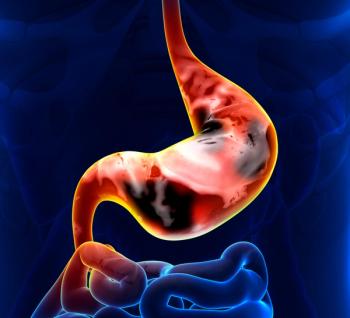
Nivolumab Combo Shows Efficacy, Safety in Muscle-Invasive Bladder Cancer
Phase 2 data support the potential of replacing cisplatin with nab-paclitaxel as a backbone therapy for those with muscle-invasive bladder cancer.
Safety and efficacy were reported with nivolumab (Opdivo) plus nab-paclitaxel when administered to patients with muscle-invasive bladder cancer (MIBC), according to findings from the phase 2 NURE-Combo trial (NCT04876313) presented at the
The data were presented by Chiara Mercinelli, MD, of IRCCS San Raffaele Hospital in Milan, Italy.
For the study, the investigators included patients who were cisplatin ineligible or declined cisplatin-based treatment, had previously untreated MIBC that was clinical stage T2-T4a, N0-1, M0, as assessed via 18-FDG PET and bladder multiparametric MRI scan, and had an ECOG Performance Status of 1 or lower. The primary end point was pathologic complete response (ypT0N0). Secondary end points included proportion of ypT≤N0, event-free survival, overall survival, medical safety, and surgical safety.
Patients received “4 cycles of [nivolumab] 360 mg Q3W+[nab-paclitaxel] 125 mg/m2 on Day 1 and 8, Q3W, followed by [radical cystectomy] and by 13 administrations of adjuvant [nivolumab] 360 mg Q3W,” wrote the authors.
Thirty-nine patients were screened for the study, of which 7 were excluded due to either patient refusal of evidence of N2-3 or M1 disease. Additionally, 1 patient was excluded due to a diagnosis of non–muscle-invasive tumor following centralized pathological review. Seventeen (54.8%) had cT3-4 stage cancer, 14 (45.2%) had cT2, 2 patients (6.4%) had N1, and 15 (48.%) patients had a variant histology component. The entire cohort completed neoadjuvant treatment were thus evaluable for the primary end point.
Median follow-up was 12 months (interquartile range [IQR]: 9-17, 5). The median time from treatment initiation to surgery was 4 months (IQR: 3-4). A total of 12 patients (38.7%; 95% CI: 22-56) achieved a ypT0N0/X response, and 22 patients (70.9%; 95% CI: 55-87) achieved a ypT≤1N0 response. Three patients refused radical cystectomy and were offered re-transurethral resection of the bladder tumor “prior to maintenance nivolumab after evidence of ctDNA negative assay and MRI complete response,” wrote the authors. The investigators observed a 12-month event-free survival rate of 96.4% (95% CI: 89.9-100).
In collaboration with Foundation Medicine, the investigators also performed comprehensive genomic profiling on matched pre- and post-therapy archival samples from all 31 patients, and they observed no significant differences in genome biomarkers between response categories.
The most common hematological adverse events (AEs) of any grade were anemia in 20 (64.5%) patients and neutropenia in 6 (19.3%) patients. Grade 3-4 anemia was observed in 1 (3.2%) patient, and grade 3-4 neutropenia was seen in 3 patients (9.7%). The most common any-grade non-hematological AEs included gastrointestinal disorder in 14 (45.1%) patients, asthenia in 12 (38.7%) patients, cutaneous toxicity in 11 (35.5%) patients, paresthesia in 9 (26.5%) patients, increased AST/ALT in 7 (22.6%) patients, endocrinological disorders in 6 (19.3%), arthralgia in 3 (9.7%) patients, ARI in 4 (12.9%) patients, and pneumonia in 3 (9.7%) patients. Serious AEs that were treatment related occurred in 3 (9.7%) patients, and 8 (25.8%) serious AEs that were surgery related were observed. Five patients (16.1%) received less than 4 cycles of neoadjuvant treatment due to treatment-related AEs (TRAEs). Grade 3 TRAEs were observed in 8 patients. No TRAEs of grade 4 or higher were observed. Clavien-Dindo classification was used to assess post-cystectomy complications within 90 days of radical cystectomy. Grade IIIa or higher complications were seen in 8 patients (28.6%).
“[The] NURE-Combo trial provided insights into the potential value of expanding chemotherapy combinations with immune checkpoint [inhibitors] in muscle-invasive disease. This approach was effective and safe, suggesting the possible role of nab-paclitaxel in replacing cisplatin as a backbone therapy for a population with unmet clinical need. [The] results also strengthen the role of clinical complete response to envision organ-sparing approaches,” Mercinelli said in her concluding remarks.
Reference
First results of NURE-Combo: a phase 2 study of neoadjuvant nivolumab (NIVO) AND Nab-Paclitaxel (ABX) followed by postsurgical adjuvant NIVO in patients (PTS) with muscle-invasive bladder cancer (MIBC). Presented at: 2024 American Urological Association Annual Meeting. May 3-6, 2024, San Antonio, Texas. PD34-10
Newsletter
Stay up to date on recent advances in the multidisciplinary approach to cancer.






























































































